Dante and Virgil are steadily making their way up the island mountain of Purgatory, and have just met Pia de’ Tolomei, who was murdered by her husband, but still has to wait here because of her late repentance. In seeking advice as to how best to make their way up the mountain, they meet the mediaeval poet Sordello, who like Virgil was born in Mantua.

After lamenting for the state that Italy is in, the spirit informs them that they cannot proceed any further upwards once the sun has set, a basic rule of Purgatory. He leads them to a valley inset into the mountain where they can spend the night among the select company of former rulers there.
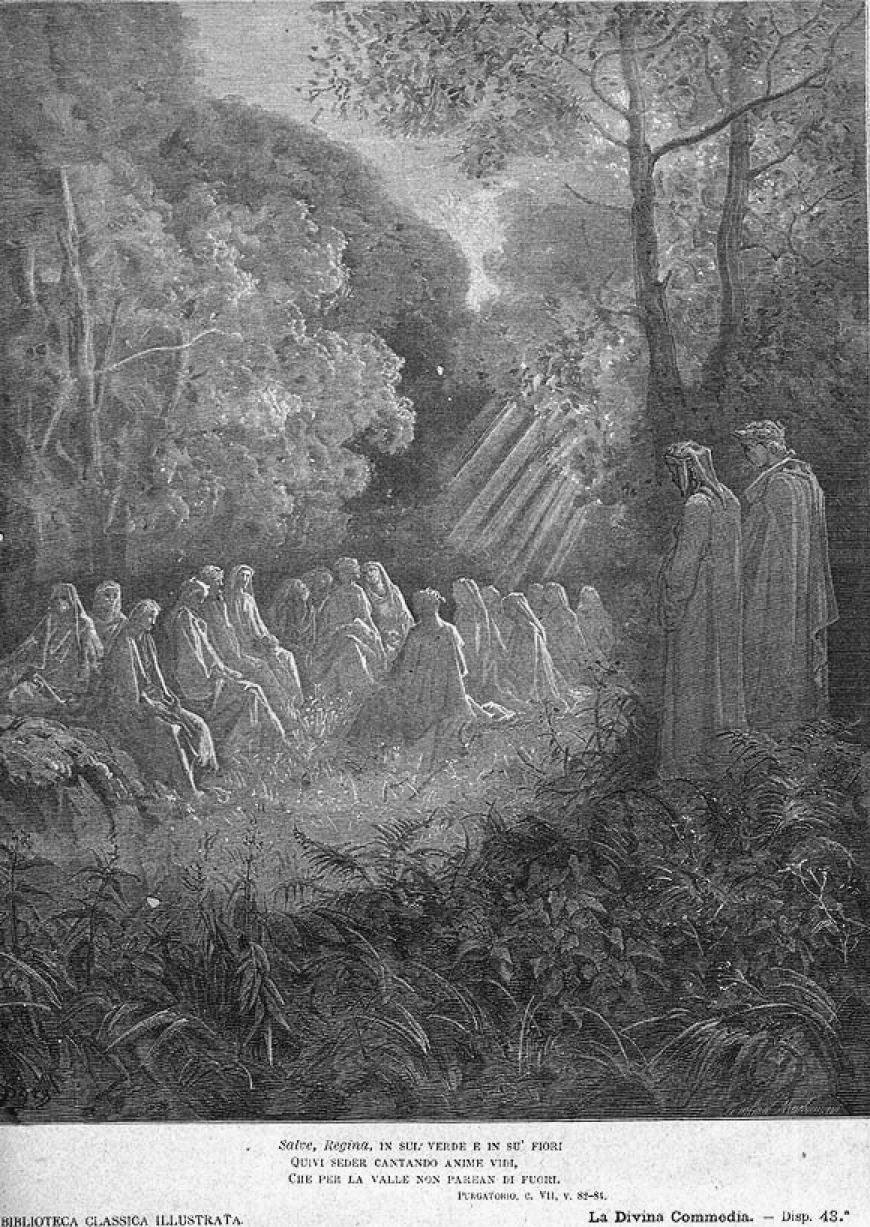
Amid lush vegetation and sweet-smelling flowers, the rulers sing hymns and pray. Among the rulers are various more virtuous European monarchs, including Philip II of France and Henry III of England. In the evening, two green angels come down and assume guard in the valley. An evil snake then enters, only to be chased away by the angels with their flaming but blunted swords – a performance which seems to take place each evening.
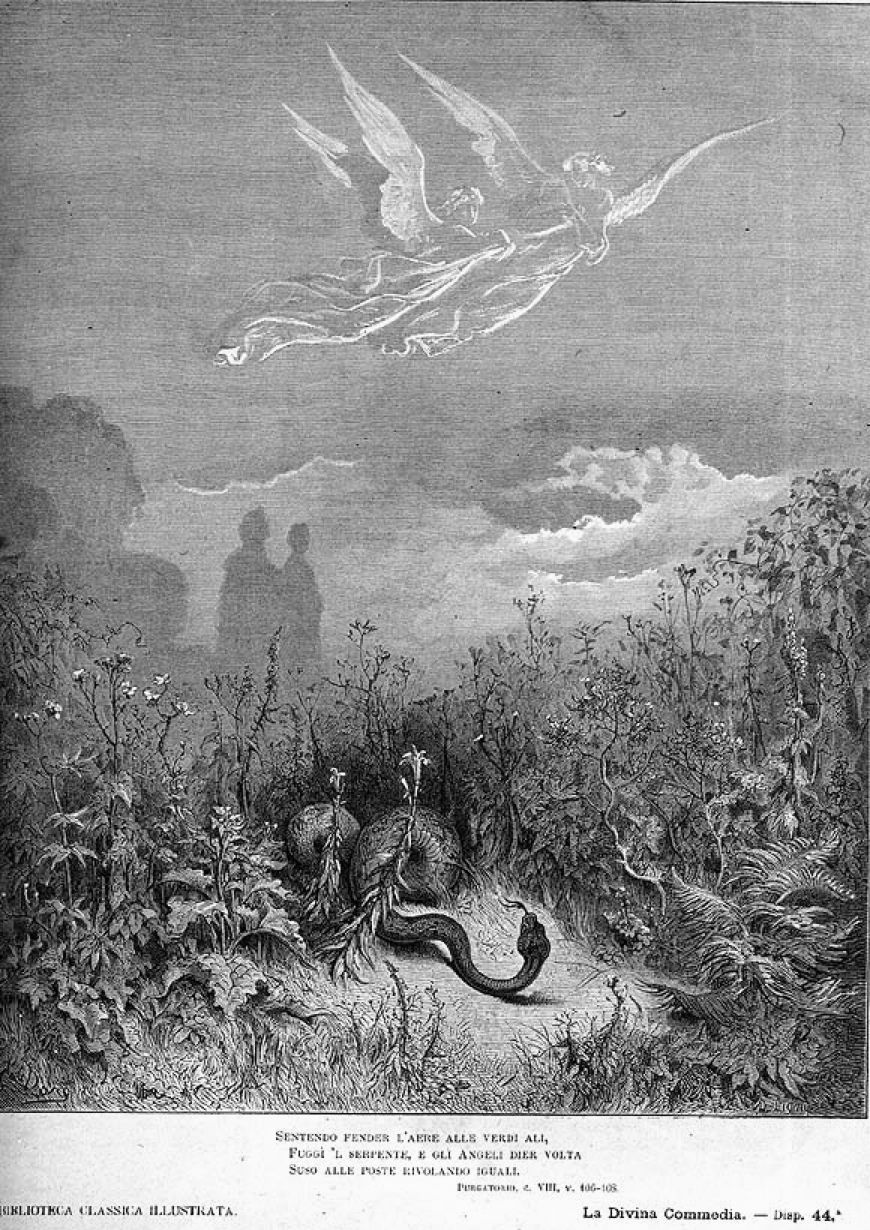
One interesting contact here is between Dante and a member of the Malaspina family, who were later to shelter Dante during his exile from Florence.

When Dante finally falls asleep just before dawn, he dreams that, like the young Ganymede, he is abducted by a huge eagle and taken to Olympus.
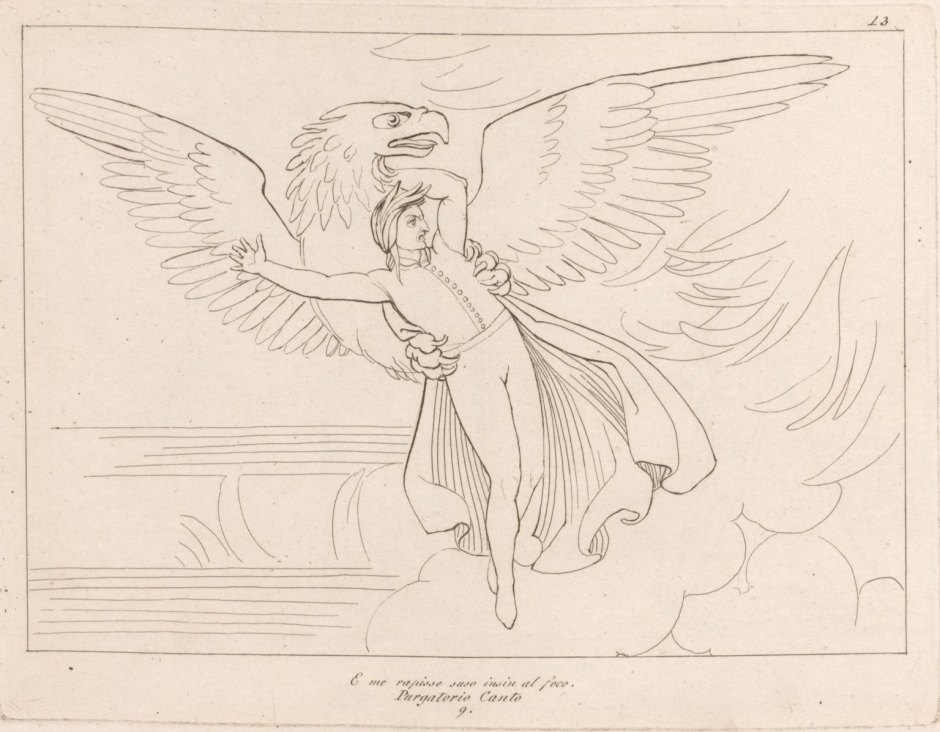


When he wakes, he discovers that he was carried in his sleep by Saint Lucy or Lucia, and deposited at the entrance gate to Purgatory itself.



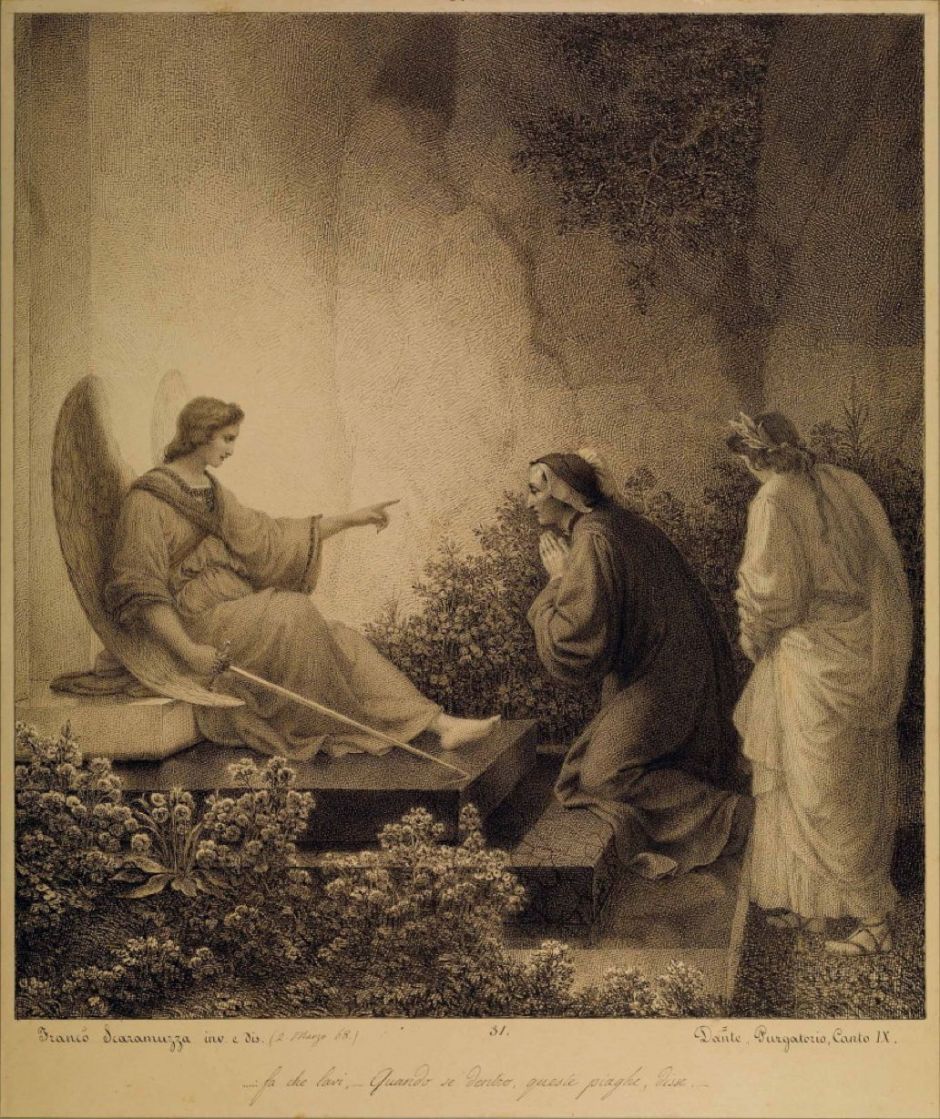
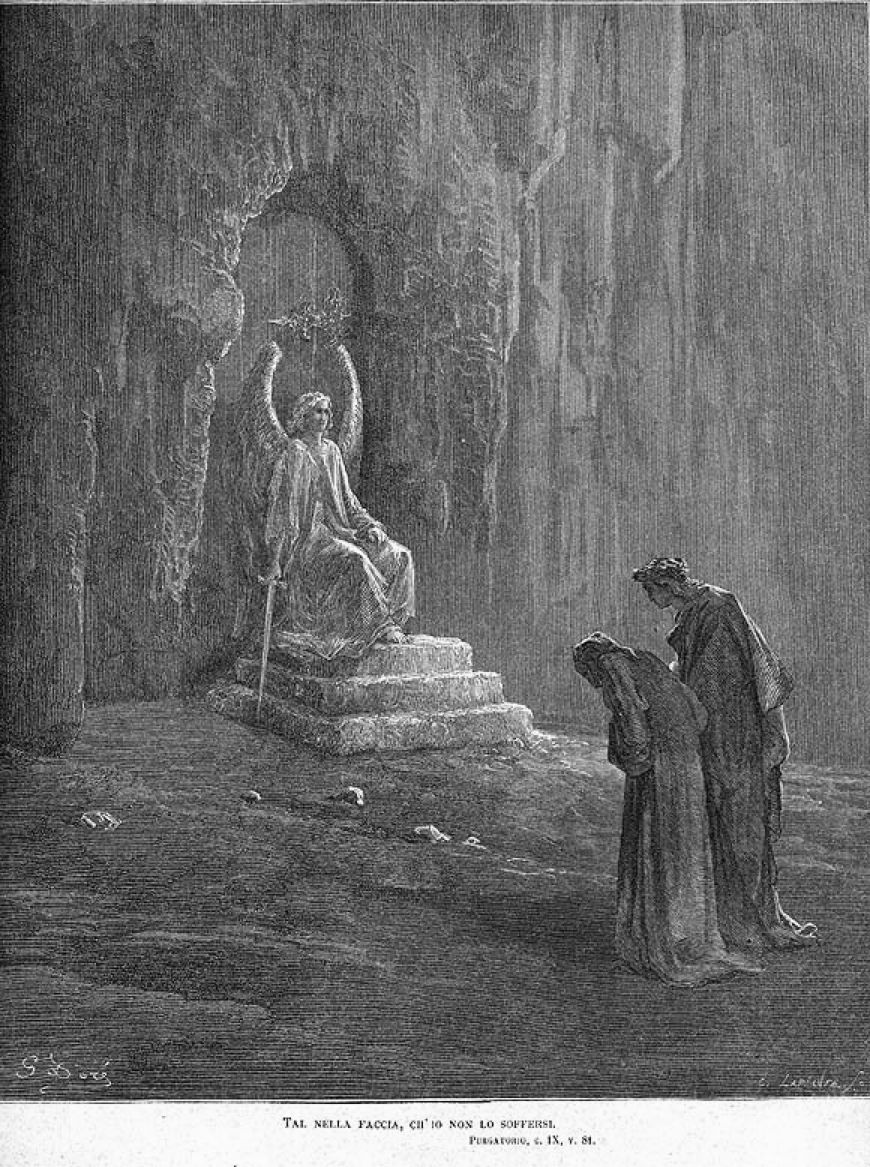
The gatekeeper angel there tells Dante to ascend three steps of marble, rock and porphyry which symbolise penance, then traces seven letters P (for peccatum, sin) on his forehead with his sword. The angel opens the entrance to Purgatory using one golden and one silver key given to him by Saint Peter. As Virgil and Dante enter Purgatory, the angel warns them not to look back or they will be returned to outside its wall.
The artists
William Blake (1757–1827) was a British visionary painter and illustrator whose last and incomplete work was an illustrated edition of the Divine Comedy for the painter John Linnell. Most of his works shown in this series were created for that, although he did draw and paint scenes during his earlier career. I have a major series on his work here.
Gustave Doré (1832–1883) was the leading French illustrator of the nineteenth century, whose paintings are still relatively unknown. Early in his career, he produced a complete set of seventy illustrations for translations of the Inferno, which were first published in 1857 and continue to be used. These were followed in 1867 by more illustrations for Purgatorio and Paradiso. This article looks at his paintings.
John Flaxman (1755–1826) was a British sculptor and draughtsman who occasionally painted too. When he was in Rome between 1787-91, he produced drawings for book illustrations, including a set of 111 for an edition of The Divine Comedy. In 1810, he was appointed the Professor of Sculpture to the Royal Academy in London, and in 1817 made drawings to illustrate Hesiod, which were engraved by William Blake.
Joseph Anton Koch (1768-1839) was an Austrian landscape painter, who worked mainly in Neoclassical style. During his second stay in Rome, he was commissioned to paint frescos in the Villa Massimi on the walls of the Dante Room there, which remain one of the most florid visual accounts of Dante’s Inferno. He completed those between 1824-29. He also appears to have drawn a set of illustrations for Dante’s Inferno in about 1808.
Francesco Scaramuzza (1803–1886) was an Italian painter who specialised in mythological and historical narratives. He became quite obsessed with Dante’s Divine Comedy, and for much of his career worked on producing paintings and drawings of its scenes. He worked mainly in Parma, in Italy.
References
Robin Kirkpatrick (trans) (2012) Dante, The Divine Comedy, Inferno, Purgatorio, Paradiso, Penguin Classics. ISBN 978 0 141 19749 4.
Richard Lansing (ed) (2000) The Dante Encyclopedia, Routledge. ISBN 978 0 415 87611 7.
Guy P Raffa (2009) The Complete Danteworlds, A Reader’s Guide to the Divine Comedy, Chicago UP. ISBN 978 0 2267 0270 4.
Prue Shaw (2014) Reading Dante, From Here to Eternity, Liveright. ISBN 978 1 63149 006 4.

